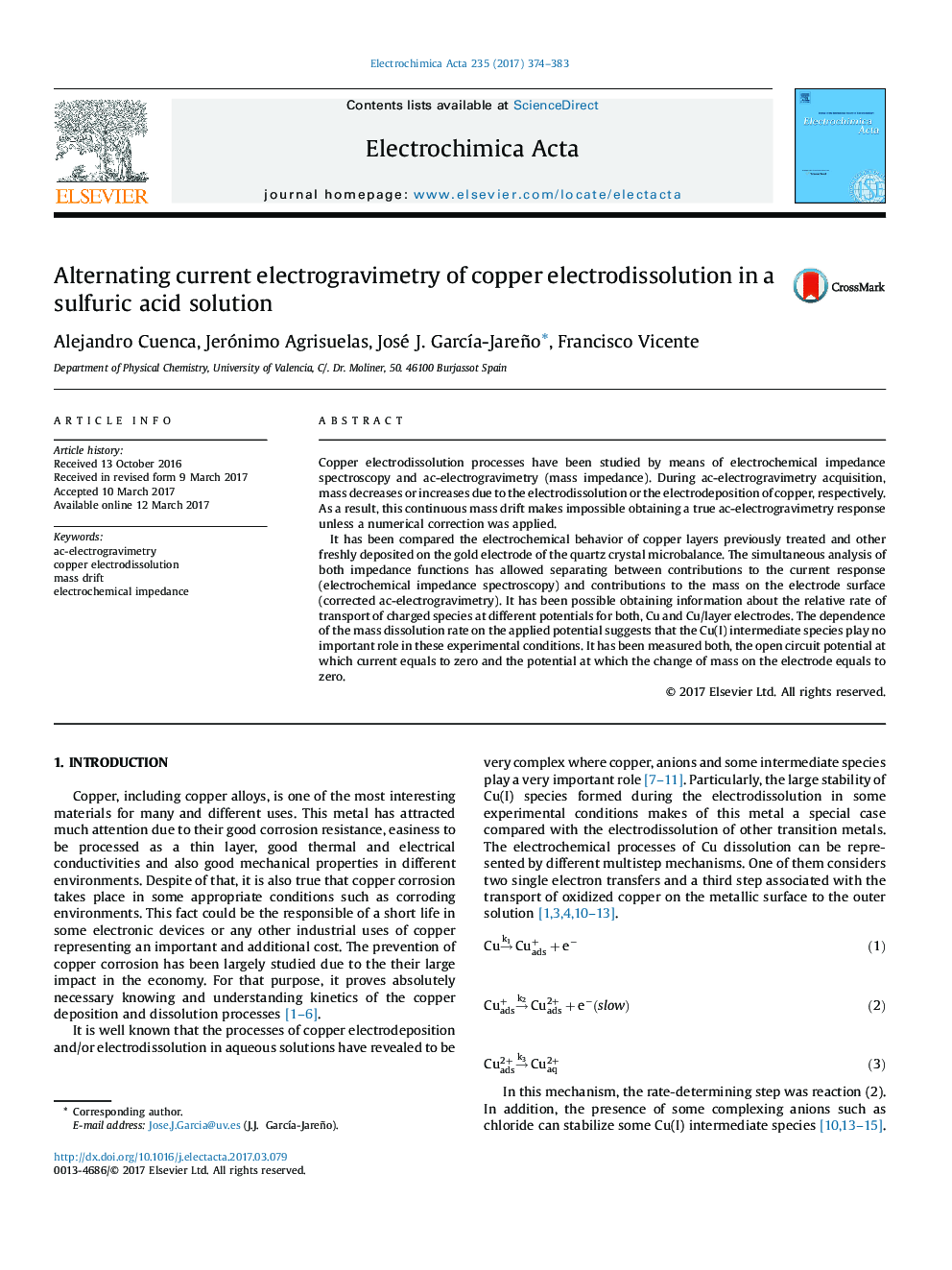| Article ID | Journal | Published Year | Pages | File Type |
|---|---|---|---|---|
| 6471616 | Electrochimica Acta | 2017 | 10 Pages |
â¢Mass impedance is obtained during electrodeposition or electrodissolution in H2SO4 solutions.â¢The rate of Cu dissolution is obtained from mass and electrochemical impedance.â¢In H2SO4 solutions, Cu electrodissolution is described by a two steps mechanism.â¢FÎm/Îq gives information about coupled processes.
Copper electrodissolution processes have been studied by means of electrochemical impedance spectroscopy and ac-electrogravimetry (mass impedance). During ac-electrogravimetry acquisition, mass decreases or increases due to the electrodissolution or the electrodeposition of copper, respectively. As a result, this continuous mass drift makes impossible obtaining a true ac-electrogravimetry response unless a numerical correction was applied.It has been compared the electrochemical behavior of copper layers previously treated and other freshly deposited on the gold electrode of the quartz crystal microbalance. The simultaneous analysis of both impedance functions has allowed separating between contributions to the current response (electrochemical impedance spectroscopy) and contributions to the mass on the electrode surface (corrected ac-electrogravimetry). It has been possible obtaining information about the relative rate of transport of charged species at different potentials for both, Cu and Cu/layer electrodes. The dependence of the mass dissolution rate on the applied potential suggests that the Cu(I) intermediate species play no important role in these experimental conditions. It has been measured both, the open circuit potential at which current equals to zero and the potential at which the change of mass on the electrode equals to zero.
